Gayle Irwin's Blog, page 13
January 29, 2019
agility: A fun way to improve your cat's health
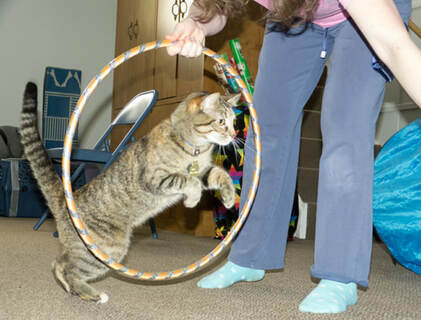
he past few weeks, I've been talking about improving our pets' health and highlighting different "sports" in which our pets can participate. Last week we looked at canine agility; this week, I'm happy to welcome a guest who works with her cats in agility. I'm pleased to bring this post written by Allison Hunter-Frederick. The photos are of her cats: Rainy at left and Cinder in an agility tunnel at the end.
The instant I open our basement door, two of our cats race from their resting spots to join me. They meow and clamber over one another to be the first allowed downstairs. Why are they so excited? They know that an agility session awaits them.
January’s pet calendar is highly focused on the health of dogs. It’s a time when owners are encouraged to walk them and train them. But cats have health needs too.
According to the Association for Pet Obesity Prevention, 60% of America’s cats are obese. In addition, the pet insurance company Nationwide reported in 2017 that nearly 20 percent of its members’ claims were for conditions and diseases related to obesity. Two factors that contribute to obesity in cats are too little mental stimulation (which results in overeating) and too little exercise.
Cat Agility, Really?
Agility is a fun activity that helps to address a cat’s physical needs. In this team sport, your cat will race through tunnels, leap over jumps, weave between poles, and more. Agility benefits cats because it makes use of their senses and skills. Cats have excellent visual focus and accuracy, which they exercise to the fullest as they race through obstacles. They also have strong sprinting and jumping abilities, which they can make use of and hone through an agility course. Additionally, cats excel in learning a skill, remembering it, and adapting it to new situations. This knack to problem-solve enables them to easily learn each new agility course.
Although their independent nature can work against cats, it can also work for them. As their owners, we simply need to tap into their independence by giving them a reason to do agility. Treats, toys, and the obstacles themselves can all serve as motivation.
Lucy’s Learns Agility
My initial venture into cat agility happened in the early 2000’s when I became a first-time cat owner. Inspired by watching my husband and our toy poodle compete at agility trials, I taught our calico cat, Lucy, the basics of agility. Some obstacles such as jumping she caught onto after one training session, while others such as tunnels and weaves took several training sessions.
I began by teaching Lucy one obstacle at a time in our living room. First, I lined up a row of chairs and placed a treat under each. Once Lucy got used to the idea of running through the chair ‘tunnel,’ I’d just throw one treat to the opposite end for her to race after. Then I bought a child’s hoop from the Dollar Store. I held the hoop so that its bottom touched the floor and I coaxed Lucy to step through the hoop with a treat. Over time, I gradually increased the distance from the floor and the bottom of the hoop until she was jumping through the hoop. Next, I bought some empty pop bottles and spread them a few feet from each other. Each time I lured her around a pop bottle I rewarded her with a treat. Once she became proficient with weaving, I increased the difficulty level by rewarding her only after two bottles, then three and four, until she could weave a course of six. When Lucy had mastered all three obstacles, I combined them to create an amateur course in our living room.
Agility Continues at Home
With our current cats, Cinder and Rainy, I became more serious about training. This is why our family now has an agility course cut in our basement. Although such a project can involve large pieces of equipment, you can create an economical one in your home. Foam agility dog jumps and training agility tunnels run about $50 each. Most agility weave pole sets are designed for outdoor use, but I found a set of six indoor weaves and a hoop at Bed, Bath, and Beyond. Friends of mine have used traffic cones or even toilet plungers as weave poles. A dog agility course will typically also include a teeter, A-Frame, a cat/dog walk, and table. I have yet to find economical options for a teeter and a cat/dog walk, but I created an A-Frame by pushing together two sets of small pet stairs and a table by using a sturdy cardboard box.
Training is the highlight of every afternoon for my cats. I take about fifteen minutes with each cat. On their turn, I run them a few times through a course in addition to teaching them obedience and tricks. Both receive lots of cat treats and praise as rewards. At the same time, I let each cat dictate the pace. If one of them struggles with an agility obstacle, I work specifically on it. By the same token, if either of them loses interest, I move into a different type of training or I end the session for the day.
Is it a Sport for You and Your Pet?
For any pet owner, there are three reasons to take up agility. First, it’s fun. Second, because agility is a team sport, it will strengthen the bond between you and your pet. Third, all this activity will be good for the health of both you and your pet. Whether you use just a few or several obstacles, your cats will love being active with you.
Interested in doing cat agility? Feel free to ask questions in the comments.
Watch Allison and Rainy go through agility on YouTube; clink the link here to see them in action: https://youtu.be/4NgAtiAQob8
About Allison
Allison Hunter-Frederick is an administrative assistant, pet blogger, and cat therapy handler. She hosts an animal welfare blog at lincolnpetculture.wordpress.com/. She is also taking classes on cat behavior. Readers can follow her cat Rainy on Instagram @rainythetherapycat. Allison’s goals are to strengthen the human-pet bond and increase pet retention. She is available for guest posts and freelance pet writing.
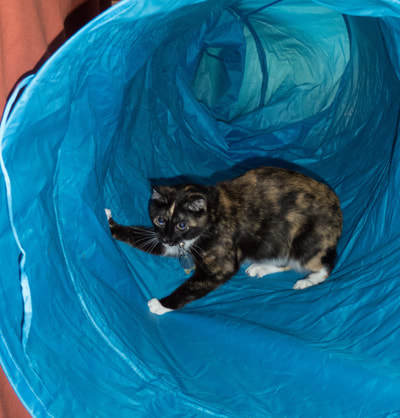
Published on January 29, 2019 04:30
January 22, 2019
canine agility - is this the right sport for you and your dog?
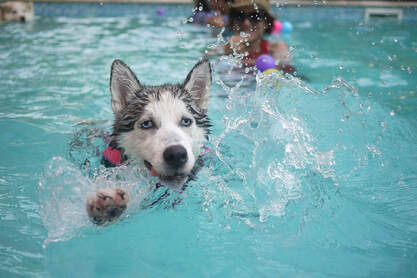 There are many types of activities a person can do with their pet. During the next few months, we’re going to look at the numerous and varied sports you can do with your pet. Although primarily geared for canines, cats can also engage in different activities, as we'll learn in future posts through this series I’m calling “What Activities Can I Do with My Pet?”
There are many types of activities a person can do with their pet. During the next few months, we’re going to look at the numerous and varied sports you can do with your pet. Although primarily geared for canines, cats can also engage in different activities, as we'll learn in future posts through this series I’m calling “What Activities Can I Do with My Pet?”Canine Sports
Dogs love activities. In fact, most dog breeds originated for some type of purpose, whether hunting, herding, or digging. Therefore, different breeds are high energy; they need activity to burn off that energy. These days, there are a wide variety of sporting events you and your dog can do together, from agility to skiing. This week, we’ll look at canine agility.
What is Canine Agility?
Agility is a team sport, an activity between a dog and its handler. It’s often a competition and is endorsed by the American Kennel Club (AKC) and other canine organizations. However, you and pup do not have to compete; you can just enjoy the sport for the fun.
To participate in agility, dogs go through a series of obstacles, including weave poles, tunnels, and see-saws; the idea of the competition is to complete the course as quickly as possible, with the best time produced being the winner. The competitions are held for dogs of different sizes; therefore, your collie and your Westie can both complete. Even if you choose to not participate in competitions, you and your dog can enjoy the benefits of agility in your own back yard. Equipment can be purchased online and sometimes in big box pet supply stores like PetCo. You can also make agility equipment yourself or have someone make the course items for you.
What Breeds Do Best in Agility?
Although any type of dog can participate in agility, the breeds most adept at this sport seem to be Border Collies, Australian Shepherds, Shetland Sheepdogs (“Shelties”), and some terriers. Surprisingly, you can also find Pembroke Welsh Corgis, Standard Poodles and German Shepherd Dogs on the list. If a dog has energy, listens well, and knows basic obedience commands, s/he will likely enjoy and do well in agility.
Where to Find Competitions in the U.S.
One of the best ways to discover if agility is a good sport for you and your dog is to visit some agility competitions and observe how things are done. Here are three websites to find out where competitions are being held:
http://www.nadac.com/trial-calendar.htm
https://www.usdaa.com/events.cfm
https://www.akc.org/sports/agility/
If you think agility would be fun for you and your pup, learn more about this sport and how to get started (whether for fun or competition) by visiting these websites:
https://www.akc.org/sports/agility/getting-started/
https://www.cesarsway.com/dog-training/toys-and-play/how-to-get-started-with-dog-agility-training
https://www.dogster.com/dog-training/dog-agility
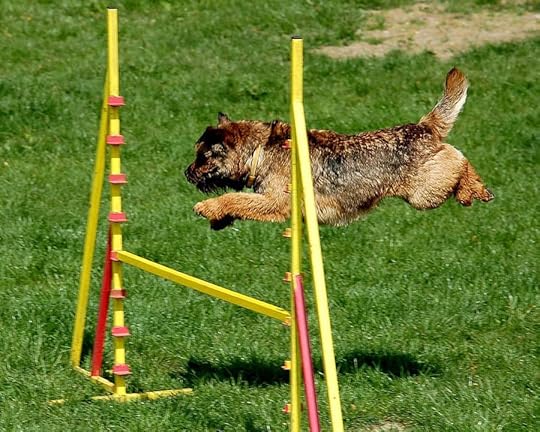
Published on January 22, 2019 07:22
January 16, 2019
benefits of training your pet
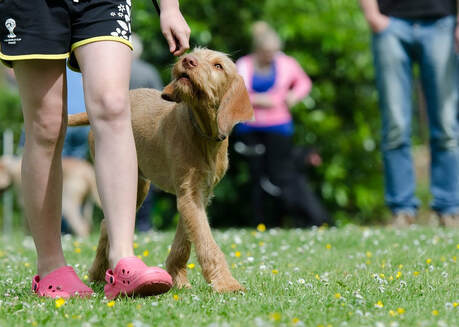 There are many “pet holidays” and “special days” throughout the year; January is no exception. As noted last week, this is Walk Your Dog Month. January is also Train Your Dog Month.
There are many “pet holidays” and “special days” throughout the year; January is no exception. As noted last week, this is Walk Your Dog Month. January is also Train Your Dog Month.Training our dogs even the basic commands, like sit, stay, come, and heel, is a great idea for several reasons. First and foremost, emphasizing these obedience words helps keep them safe. Daily, dogs in yards and visiting parks run into the street and are hit by cars. Having your dog respond to your voice command to “come” or “stay” helps prevent such tragedy should your beloved furry friend leave your side.
Training doesn’t have to be all about commands, however. Training can also include fun activities, such as agility, field work, and even games of fetch. Training can involve both voice commands and hand signals, and such activity is not only good for your dog’s physical health, but also its mental health as learning engages your dog’s brain.
Dogs aren’t the only animals that can be trained. Believe it or not, cats can also respond to words. “No” and “off” are good to use with cats as well as dogs; some felines are notorious for getting on tables and kitchen counters. I know a woman who uses clicker training with cats, rewarding them with treats for their good responses to her words.
Pet people want to bond with their beloved animals; training helps do that. For our pets, especially dogs, training is like playing games, and engaging your furry friend in games is fun for them. Therefore, they view it as time spent with you, which dogs especially enjoy since they are pack animals.
Take time this month to stimulate your pet mentally and physically with training. You’ll discover not only enjoyment in spending more time with your pet, but you’ll also reap the benefits of knowing your pet is safer by positively responding to commands as well as experience a stronger bond with your special friend.
Learn more about training dogs here:
http://www.canineminded.com/training-tips/
https://www.thesprucepets.com/steps-to-train-your-dog-1118273
Learn more about training cats here:
https://www.hillspet.com/cat-care/training/cat-training-the-easy-way
https://www.rd.com/advice/pets/how-to-train-a-cat/
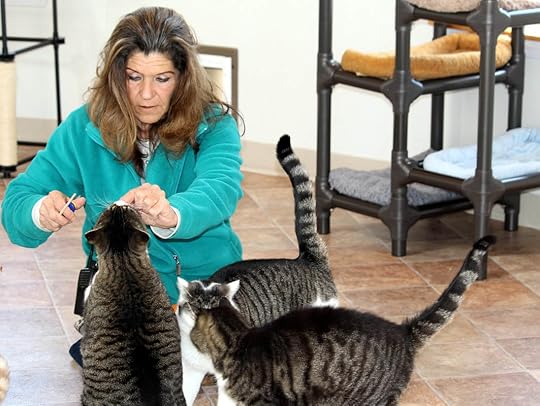
Published on January 16, 2019 08:39
January 9, 2019
exercise your pet, exercise yourself
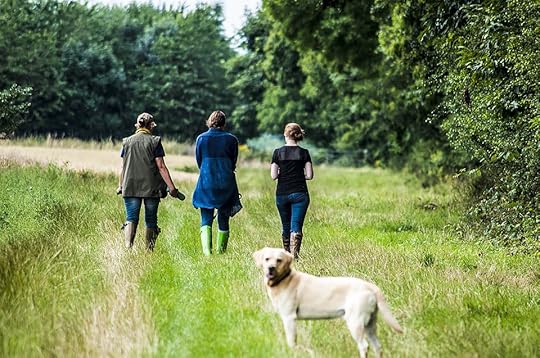 January is Walk Your Dog Month. I don’t know if there’s a special time set aside for Exercise Your Cat, but there should be. All pets need activity to be healthy. So do people. We can take time this month, in fact, each week, and preferably each day, for a bit of exercise with our pets. It’s good for them, and it’s good for us!
January is Walk Your Dog Month. I don’t know if there’s a special time set aside for Exercise Your Cat, but there should be. All pets need activity to be healthy. So do people. We can take time this month, in fact, each week, and preferably each day, for a bit of exercise with our pets. It’s good for them, and it’s good for us!January is a time many people decide to pay more attention to their health. Exercise is one way to accomplish that. You can involve your pet in that resolution, and together, become healthier. There are many benefits to exercise for us and for our pets, including:
Keeps weight in check. Pet obesity is problem; so is human obesity. Obesity leads to other health problems, such as diabetes, both people and pets.Keeps the mind sharp. Focusing on an exercise activity helps people de-stress and engages the mind. The same is true for our animals – pets who receive regular exercise are less likely to get bored and become destructive.Keeps the bond secure. Engaging in various activities with your pet, whether at home or outside, strengthens the bond between you. It can also increase socialization with others, good for us and our pets.
So, whether you talk a walk through the neighborhood, spend time at the dog park, play fetch in the backyard, or engage in a ribboned fishing pole activity with your cat, you and your pet will reap great benefits exercising together!
Read more on the benefits of activity for you and your pet at these websites:
https://www.chewy.com/petcentral/health-pet-fitness-8-reasons-your-dog-needs-exercise/
https://www.petmd.com/cat/wellness/evr_ct_exercising_with_your_cat_a_how_to_guide
https://www.cookinglight.com/healthy-living/healthy-habits/why-exercising-is-important-for-you-and-your-pet
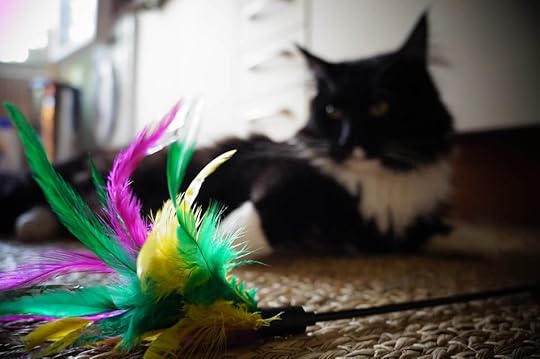
Published on January 09, 2019 08:47
January 2, 2019
5 Ways to Keep Your Pet Warm and Safe in Winter
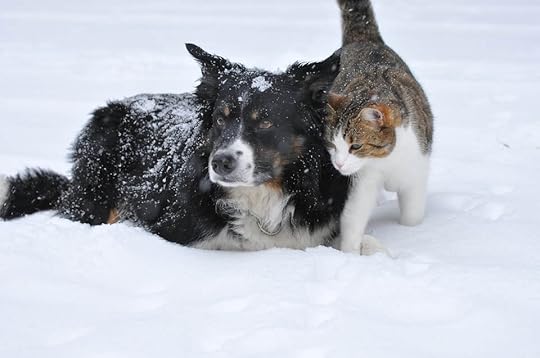 Winter is officially here. Whether your area experiences chilly rain or freezing temperatures with blowing snow, this time of year brings safety concerns for our pets, including frostbite and poisoning. Below are five ways to keep your pet warmer and safer during these next several months:
Winter is officially here. Whether your area experiences chilly rain or freezing temperatures with blowing snow, this time of year brings safety concerns for our pets, including frostbite and poisoning. Below are five ways to keep your pet warmer and safer during these next several months:Consider coats. Short-haired dog breeds or older animals may need a coat to wear outside while on a walk. No one likes feeling like an icicle or being chilled by rain, including our beloved pets. So, if you have a dog that's affected by winter conditions, provide an extra layer of warmth in the form of a coat or sweater.Buy booties. The pads of a pet's feet can become frost-bitten if they are outdoors for too long. Ice, snow, and ice melt can also be picked up while outside. Many mushers and other dog owners use booties specifically made for dogs to protect their paws; you, too, may find those beneficial for your pet.Clean the coat and dry off. When your dog is bathed, make sure s/he is completely dry before going outdoors. And when returning home from a walk, clean your dog’s paws, legs and stomach area. Your pet can ingest antifreeze, salt, and other harmful chemicals if he’s allowed to clean himself.Keep pets from poisons. Antifreeze poisons pets and so does some ice melts; therefore, keep your pets away from these products, and, as noted above, clean your animals’ coat and paws regularly.Keep kitties indoors and regularly check your car’s engine. Cats should be kept inside the house to keep them safe from other animals roaming outdoors and from being run over by cars. Kitties that are outside in winter often climb into the engine compartments of vehicles to stay warm; therefore, prior to starting your car's engine, bang on the hood to scare away any potential stowaways. Fan belts seriously injure, even kill, cats and other small animals that crawl into the engine area. Some kitties even huddle in the wheel-well, so do a thorough check of your vehicle before pulling away.
Putting these five tips into action will help keep your four-footed companion warmer and safer during chilly winter months.
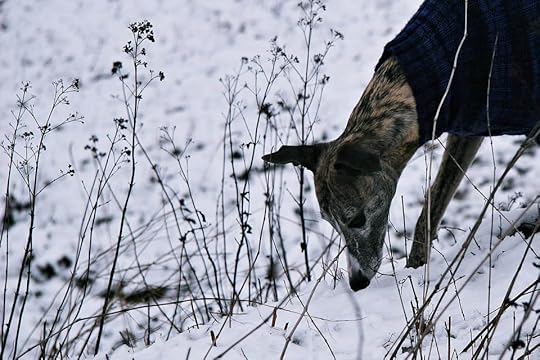
Published on January 02, 2019 04:00
December 27, 2018
Did you get a pet for christmas? tips to help you enjoy your new friend!
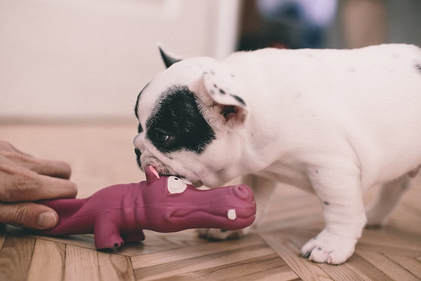 There’s a funny song “I Want a Hippopotamus for Christmas” – did you get one of those? Sometimes families or individuals bring home a new pet as a Christmas gift, maybe not a hippo but a dog, cat, or guinea pig. Is that you this year? No matter what time of year you bring a new pet into your household, your life is going to be different – just as it is when a new human baby arrives. Here are a few tips to help you, your family, and your new pet friend adjust to the “new normal:”
There’s a funny song “I Want a Hippopotamus for Christmas” – did you get one of those? Sometimes families or individuals bring home a new pet as a Christmas gift, maybe not a hippo but a dog, cat, or guinea pig. Is that you this year? No matter what time of year you bring a new pet into your household, your life is going to be different – just as it is when a new human baby arrives. Here are a few tips to help you, your family, and your new pet friend adjust to the “new normal:”Be responsible – the furry, scaly, or feathered friend now living in your house is now a responsibility that cannot be taken lightly. This animal depends on you for its care: food, water, shelter, attention. And though you may have more time during the holiday season, being off work and out of school for several days, what happens when school starts, and/or you must return to work? The care and attention can’t take a back seat. Don’t neglect your animal; adjust your schedule to include the feeding and playtime your pet needs.Make a commitment – your new relies upon you and this dependence doesn’t cease when the puppy grows into a young adult or the adult becomes a senior. Be committed to caring for this animal for the rest of its life – newness will wear off, puppy behavior will no longer be cute, and the fish won’t feed itself. Compassion, care, and commitment are necessary for the animal’s entire life – please be that type of owner. Too many animals wind up in shelters after the first few months or years after people bring them home because the commitment and responsibility wanes – don’t be one of those! Animals become attached and their hearts and spirits can be broken by abandonment.Make training a priority – Training your dog basic obedience is necessary for its well-being and your sanity. It will be better behaved in social settings and in your home if you teach it seven basic commands: sit, stay, down, come, heel, no, and off. Although tricks can be fun, the basic commands help keep your dog under control and safe. Cats can also be taught things, including walking on a leash and staying off the table and kitchen counter. Some birds can be taught to speak, and fish – well, they are lovely to look at.Provide a “safe space” – this can be a kennel or a room. Dogs and cats especially need quiet places from which to escape noise, company, and door openings and closings (through which they can run outside and end up hurt). These “retreat” areas should have toys, blankets, and other “comfortable” things not only to keep them occupied, but also relaxed.Exercise your pet – Whether your new animal is a hamster, a rabbit, a bird, a ferret, or cat or dog, each needs exercise and playtime. Such activity could include toys by which the animal plays by itself while you’re away or going to a park or for a walk, exercise is very important for an animal’s wellness. Pet obesity is a rising health concern which can lead to many other medical issues, such as diabetes. Just as humans need exercise, so do our pets. There are many types of toys for the different types of animals; invest in their health just as you invest in yours.
These are just five tips to consider before and after you bring home a new pet. There are many other ideas offered by the ASPCA (American Society for the Prevention of Cruelty to Animals) and Petfinder, two sites which provide pet adoption opportunities and pet care tips:
https://www.petfinder.com/pet-adoption/dog-adoption/pet-adoption-checklist/
https://www.aspca.org/pet-care
Pets bring people deep joy through their antics and their devotion. Studies show pets benefit people emotionally and physically, helping with depression, cholesterol, and blood pressure, among other things. A pet is a special gift, and it’s a gift for life. Take care of your new pet and it will take care of you!

Published on December 27, 2018 10:33
December 18, 2018
be aware of Holiday household hazards
 Nothing can ruin the holiday season quicker than a medical emergency, especially when the issue happens to your loved one, either human or pet. Between decorations and food, a plethora of problems can emerge. Therefore, make sure potential holiday hazards in your house are kept secure. Below is an infographic from VetNetwork on some of those possible perils.
Nothing can ruin the holiday season quicker than a medical emergency, especially when the issue happens to your loved one, either human or pet. Between decorations and food, a plethora of problems can emerge. Therefore, make sure potential holiday hazards in your house are kept secure. Below is an infographic from VetNetwork on some of those possible perils.Keep your veterinarian’s number handy (or the number to the closest emergency vet) as well as the ASPCA’s Poison Control Hotline in case your pet becomes poisoned or injured in some other way. Here is the organization’s toll-free number: 888-426-4435.
May you and your furry friends enjoy a safe and happy Christmas!

Published on December 18, 2018 04:30
December 10, 2018
christmas gifts for pets 2018
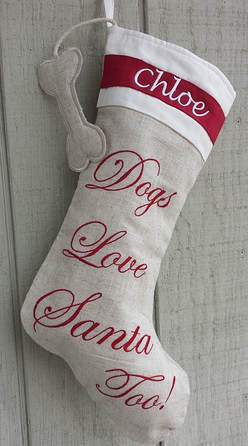 Just a few weeks left until Christmas Day – amazing how fast time goes! Have you shopped for your pet or for the pet-lover on your list yet?
Just a few weeks left until Christmas Day – amazing how fast time goes! Have you shopped for your pet or for the pet-lover on your list yet?Every year, various magazines and organizations list the “Best Gifts for Pets and Pet-Lovers.” There’s so much choice! Everything from beds and bowls to toys and treats, as well as the more obscure gifts, like a DNA test or a treat-tossing Wi-fi pet camera. Stocking stuffers include special treats and chews for the pets, and wine bottle stoppers and wine glass charms for the pet-lover.
Let’s look at some gift ideas for your furry friend.
Toys for Dogs
For years, KONG has made the list of top toys for dogs; 2018 is no different. The classic rubber chew toy continues to rank highly. Peanut butter and small treats entice dogs to play and chew – and receive a tasty reward for not chewing on furniture or shoes!
KONG also makes knotted toys and squeaker toys, including tennis balls, which can also be used as chews or to play fetch.
Nylabone is another classic and useful toy. Not only do dogs enjoy the chewing but they enjoy dental benefits, too. Non-edible chew toys are purportedly safe, however, at times large portions can be swallowed; that creates an emergency situation. Therefore, always supervise your dog with such toys.
Toys for Cats
KONG also creates toys for cats. A variety of choices allows you to find the purr-fect plaything for your feline friend. From plush to teaser toys, your kitty will find hours of enjoyment with these colorful and entertaining objects.
Catnip toys have been popular for decades. Often inexpensive, these enticing interactives come in a variety of shapes and styles. You can even create DIY catnip-filled projects. These also make great stocking-stuffers for your pet.
How about the animal-lover on your list?
Gifts for the Pet-Lover
Do you have a dog or cat-lover on your Christmas list? How about giving special socks? Maybe tumblers, mugs, or wine glasses (see ideas here: https://www.uncommongoods.com/fun/pets?view=all). Tea towels and jewelry are other options for the dog and cat people you know.
Books are another good choice, and there are plenty of great ones out there, for both children and adults. Buzzfeed supplies a list of 51 books animal-lovers should read; the list includes classics and children’s books.
My Books Make Great Gifts!
Speaking of, for more than 10 years I’ve written pet books for children and adults. For Christian dog-lovers, I have devotional books. For young readers, I create inspirational stories about dogs and cats that teach valuable life lessons. All of my books are available on Amazon. Some are print-only, a few are Kindle-only, and some come in both formats. You still have time to purchase a book or two and have it arrive before Christmas! And, if you want to “try before you buy,” I offer some free chapters and other giveaways on my website.
Whatever you give to your pet or the animal-lover on your Christmas list this year, may each of you enjoy a merry and blessed holiday!
Below are some websites that can help you find ideas for the pets and animal-lovers on your list!
https://www.thesprucepets.com/best-christmas-gifts-for-your-dog-4172348
https://www.countryliving.com/shopping/gifts/g1478/gifts-for-dog-lovers
https://www.goodhousekeeping.com/holidays/gift-ideas/g474/pet-gifts/
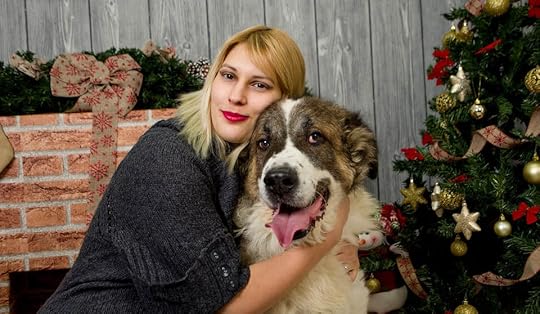
Published on December 10, 2018 05:30
December 2, 2018
Your pet's nutrition vital to a healthy life
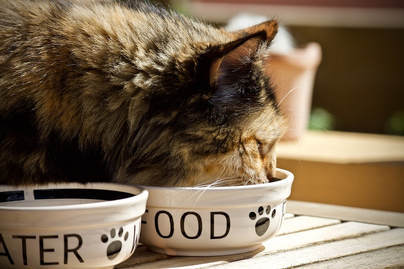 Does the quality of your pet’s food matter to you? It should. Just like what we put into our mouths and stomachs determine our overall health, the same is true of our pets. What we feed them matters. If people tried to live on potato chips, cookies, and cupcakes, our health would be negatively affected in many ways. What our pets digest can also negatively, or positively, impact their health.
Does the quality of your pet’s food matter to you? It should. Just like what we put into our mouths and stomachs determine our overall health, the same is true of our pets. What we feed them matters. If people tried to live on potato chips, cookies, and cupcakes, our health would be negatively affected in many ways. What our pets digest can also negatively, or positively, impact their health.Obesity and cancer are two major health concerns in both humans and pets. Therefore, both species need proper nutrition to combat these, and other, health issues. According to the Pet Nutrition Alliance, our pets “need over 30 essential nutrients including protein, essential amino acids, essential fatty acids, and vitamins and minerals.” Even though their needs are the same, dogs and cats have different nutrient requirements.
There are many and varied pet foods on the market. Some are less expensive but also possess the least amount of quality nutrition. Ingredients such as corn and wheat have become less acceptable due to several factors, including that, in the wild, canines and felines don’t eat such products. Coyotes, wolves, bobcats and cougars and carnivores; therefore, our dogs and cats require protein. Reading labels is an important way to know what’s in your pets’ food. For example, is the food comprised of meat or meat by-product? There’s a difference. According to the Association of American Feed Control Officials, meat is “the muscle tissue of the animal, but may include fat, gristle and other tissues normally accompanying the muscle, similar to what is sometimes seen in raw meat sold for human consumption,” and meat by-product is “the non-rendered, clean parts, other than meat, derived from slaughtered mammals. It includes, but is not limited to, lungs, spleen, kidneys, brain, livers, blood, bone, partially de-fatted low temperature fatty tissue and stomachs and intestines freed of their contents.”
How do you choose your pet’s food? If you don’t want to read hundreds of labels, or if you want a place to start, there are many online reviewing sites. One such site, PetFoodReviewer.com, started last year and doesn’t contain information on all dog and cat foods, but could be a good resource starting point. DogFoodAdvisor.com and DogFoodGuru.com are two other good sites to research. These sites also provide a listing of recalls. For cat food, check out Reviews.com, We’re All About Cats, and Catological. The American FDA (Food and Drug Administration) also maintains a list of pet food and treat recalls. Check their website to find out about any recalls: https://www.fda.gov/AnimalVeterinary/SafetyHealth/RecallsWithdrawals/default.htm.
Nearly all experts tell us to not feed human food/table scraps to our pets. However, some people prefer to make their own pet food at home. Although that’s a subject for another newsletter, with Christmas on the horizon, there may be plenty of leftovers you’re not sure what to do with. The folks at Personal Creations, who shared a post last month, created a guide on using leftovers to create pet treats; in that guide, they also have a list of foods that are good for pets (such as pumpkin and turkey) and foods to avoid giving to pets (mushrooms, turkey skin, and onions). If you didn't see that publication previously, you can find it by clicking here: https://www.personalcreations.com/blog/thanksgiving-pets.
As you shop for your pets and for pet lovers on your Christmas list, look for nutritious foods and treats to keep your beloved animals healthy!
In related news, PetCo recently announced it will stop selling pet food and treats which contain artificial colors, flavors and preservatives. Read more here: http://www.petproductnews.com/News/Petco-Plans-to-Stop-Selling-Food-and-Treats-with-Artificial-Ingredients/
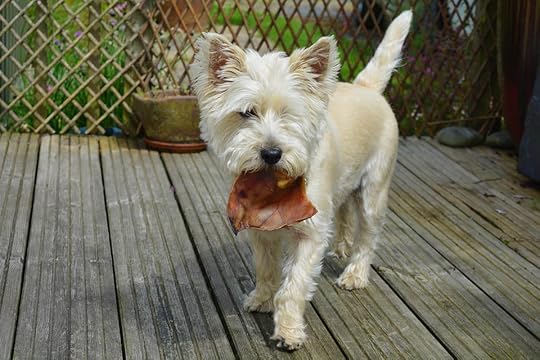
Published on December 02, 2018 08:44
November 20, 2018
thanksgiving food for pets - yes or no?
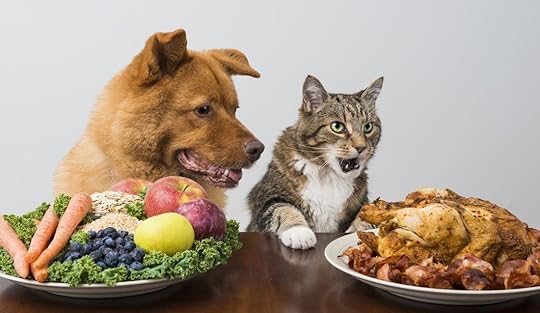 The holidays are a time for people to come together and celebrate, including the family pet(s). Your pet is a part of your family, so shouldn’t they get a “place” at the dinner table, too?
The holidays are a time for people to come together and celebrate, including the family pet(s). Your pet is a part of your family, so shouldn’t they get a “place” at the dinner table, too?Of course they aren’t going to eat at the table or consume all of the same foods as humans. However, you could give them extra attention and special treatment during the season of giving.
Your dog has been smelling that turkey for hours on end, and they are coveting a taste. There’s no need to make them beg for a scrap. Let’s face it, no matter how many times you eat leftovers, at some point you just end up throwing the rest out.
Make good use of all that yummy extra food with the ultimate guide to holiday leftovers for pets. Our friends at Personal Creations compiled a list of foods to share and to avoid with regard to your furry friend. In addition to the guide on the Personal Creations website, see the infographics below which Katie and her team have shared.

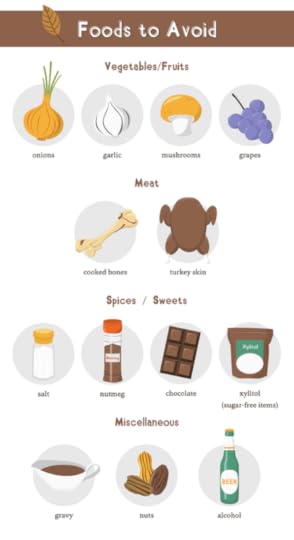 Happy and Safe Thanksgiving to you and your family, including your furry ones!
Happy and Safe Thanksgiving to you and your family, including your furry ones!
Published on November 20, 2018 07:20



